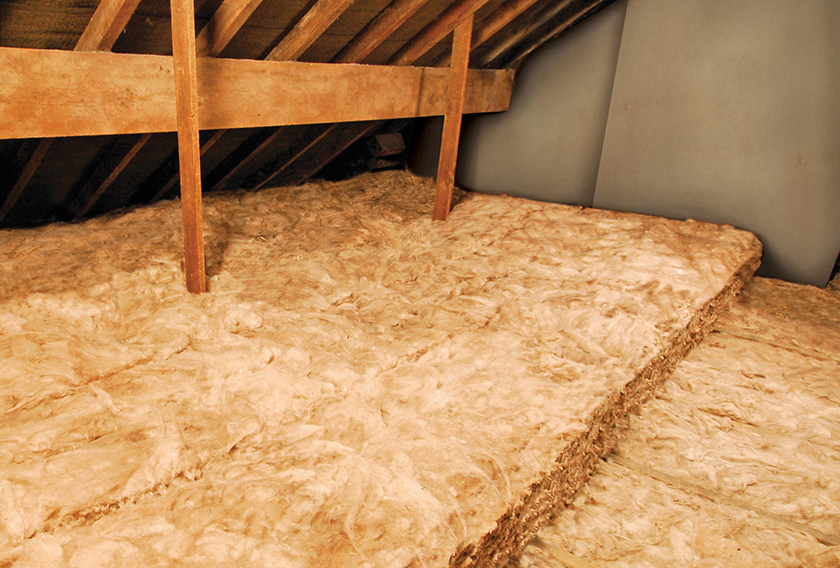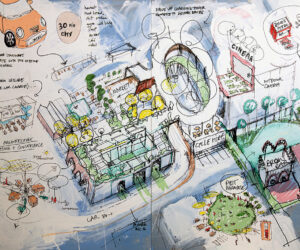Insulation – new technologies
Efficient insulation reduces noise, cut costs and increases family comfort.
If you look at the world’s best practice and international benchmarks, Australian homes have poor thermal resistance, so it’s no wonder there is plenty of room for improvement when it comes to insulation1.
With uncontrolled air leakage accounting for between 15 to 25 percent of winter heat loss in Australian homes, this means our homes are two to four times as draughty as those in North America or Europe2.
While some may argue that Australia doesn’t experience the same extremes of temperature as many of those countries, money spent on ineffective heating and cooling should be a concern to households trying to balance their budget while making their home a comfortable living space.
Brick veneer is Australia’s most common type of construction for residential dwellings yet its thermal performance is the worst of all construction types across most climates. With only 18 percent of Australian dwellings having some form of wall insulation this means many brick veneer and timber homes have an uncomfortable internal environment3.
Significant loss of heat
In winter, ceilings can dissipate between 25 and 35 percent of heat through the roof cavity, while walls can lose between 10 and 20 percent.
Whether you are building a new home, renovating, or simply considering the addition of insulation to an older house, the benefits of investing in insulation are clear:
– there is a significant reduction of the amount of artificial heating and cooling required,
– homeowners can reduce the expense of heating and cooling,
– improvement of the comfort of the building occupants,
– insulation has a long life and low maintenance,
– near-elimination of condensation on the interior of walls and ceilings and
– a cleaner home; reduction or elimination of air filtration
– a much quieter home due to good sound absorption
Insulation technology has advanced significantly in recent years, so it’s important to spend time evaluating which solution may be best for your house.
A great insulation outcome
Richard Keech, a Melbourne energy efficiency consultant and owner of a weatherboard home, carried out tests after he had insulated the roof, ceiling and standard stud-frame walls of his house.
“After the ceiling and wall insulation, I found we could relax the air conditioner/heater set point by about 2°C in both summer and winter. The house is noticeably warmer in the bedrooms on cold winter mornings, even when no active heating has been used overnight.
“Measurements of air conditioning and heating energy used from month to month show that in winter 2013 (with walls insulated) we used 25 percent less heating energy than the preceding year (with ceiling and floor insulated, but not walls). In 2013, overall energy use was an impressive 75 percent less than in our baseline year of 2006”, Richard said.
New technologies
Insulation comes in a variety of materials and like anything else, you often get what you pay for. If you want to be environmentally friendly, some high performance bulk insulation is made by using recycled glass bottles, naturally occurring raw materials and bonded using a bio-based technology with no added formaldehyde, phenols, acrylics, artificial colours, bleaches or dyes.
Other forms of insulation include foam injection, reflective materials, spray foam and bonded bead insulation. In many cases the type of insulation you use may be dictated by the type of structure around which your home is built; whether it’s a new construction or an existing house. To learn about insulation and other ways to reduce your energy costs, visit Energy Freedom at http://energyfreedom.com.au/about/
About Beyond Zero Emissions
Beyond Zero Emissions Inc. is a not-for-profit research and education organisation known for its work designing and implementing a zero emissions economy for Australia. Its goal is to transform Australia from a 19th century fossil fuel based, emissions intensive economy to a 21st-century renewable-energy-powered clean-tech economy. Energy Freedom was founded by Beyond Zero Emissions in partnership with foundation members, Energy Matters, Cherry LED, Knauf Insulation and Apricus Australia.
References:
1. Prime Minister’s Task Group on Energy efficiency, ‘Report of the Prime Minister’s Task Group on Energy Efficiency’, Canberra: Department of Climate Change and Energy Efficiency, Canberra, 2010, 280. http://ee.ret.gov.au/energy-efficiency/strategies-and-initiatives/prime-ministers-task-group-energy-efficiency/report-prime-ministers-task-group-energy-efficiency .
2. “Your Home Technical Manual 5th ed. ”Commonwealth Government, Australian Government, Department of Environment, Water, Heritage and the Arts, February 16, 2012. http://www.yourhome.gov.au/index.html .
3. “Environmental issues: Energy Use and Conservation, Mar 2011,” Australian Bureau of Statistics, Commonwealth Government, May 14, 2012, http://www.abs.gov.au/AUSSTATS/[email protected] 4602.0.55.001Mar%202008?OpenDocument



